
This is the third piece in a series on the forces driving migration from Guatemala. You can read the previous installments here and here.
In a parking lot next to a mortuary, in the Guatemalan city of San Cristóbal Totonicapán, a small construction business called Ferrocasa has posted a sign decorated with images of columns, moldings, and windows, bearing the slogan “We Will Help You Construct the House of Your Dreams.” The owner, María Ileana Ixcoy, and her sister, who is an architect, paid for their college degrees with money from remittances their father had sent home from the United States. Now the two collaborate on designing and constructing casas de remesa, or remittance houses, which have become ubiquitous in the country’s western highlands as a way for immigrants to invest their earnings while living abroad. The process, Ixcoy said, is almost always the same: customers living in the U.S. take photos of houses they like and send them to family members in Guatemala, who then bring the image to a local builder or a firm like Ferrocasa. Ixcoy has never been to the U.S., but she works with a team of designers to re-create the American styles that her customers request. Casas de remesa, she said, “have their own architectural aesthetic,” with multiple bedrooms, shingled roofs, drop ceilings, terraces, and various shades of colored glass. “Five years ago, the houses were fairly basic,” Ixcoy told me. “Four walls, a simple division of rooms . . . It’s gotten much more elaborate.”
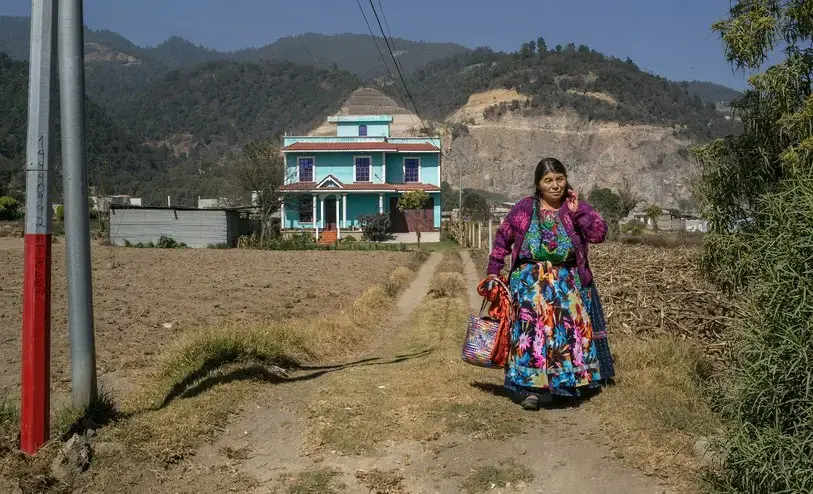
As emigration from Guatemala has reached historic levels, a fractious political debate has unfolded in the U.S. over how to stop thousands of people from travelling north each month. The causes of migration are often complex but identifiable: rampant gang violence in urban areas and extreme poverty in the countryside, exacerbated by climate change. Another, less obvious factor is psychological. With increasing numbers of people leaving, it’s become harder for others to justify staying behind. “There’s a point at which people start to lose hope,” Joy Olson, a human-rights advocate with deep experience in the region, told me. “That’s the most difficult-to-measure problem. If people don’t see a future where they are, and they see it somewhere else, they’re going to go for it.” The casas de remesa dotting the landscape in the western highlands are a daily reminder to the residents who remain that opportunity lies elsewhere. “Migration generates more migration,” Lizbeth Gramajo Bauer, a Guatemalan anthropologist at the Rafael Landívar University, told me recently. In 2017, she published a paper with the sociologist José Luis Rocha Gómez about their immigration research in the western highlands. “Remittances and the investments that stem from them create a sense of privation among those who don’t receive them,” they wrote. People who live in areas of high migration in the western highlands, the two concluded, are more likely to emigrate themselves.
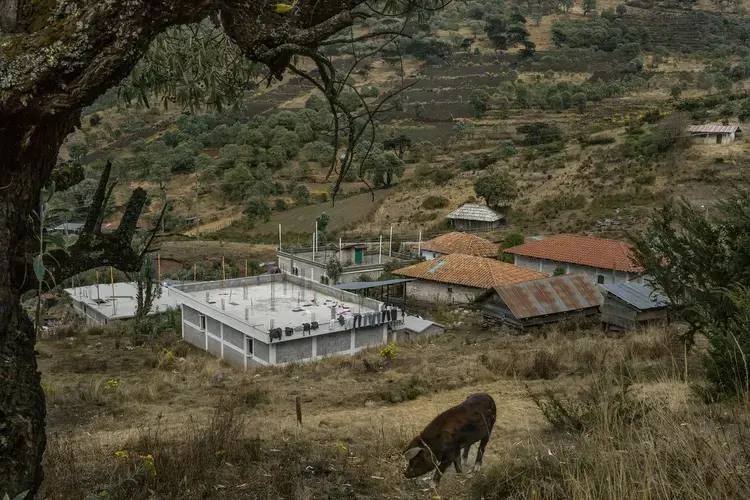
One afternoon, in the city of Quetzaltenango, I had lunch with Willy Barreno, a forty-six year-old who lived in the U.S. for fourteen years before he returned to Guatemala, in 2010. Barreno is a chef by trade and had worked in the prepared-foods section of Whole Foods, first in New Mexico, and later in Texas, Wisconsin, and Illinois. In Quetzaltenango, he runs a group called DESGUA, which helps deportees from the U.S. acclimate to life in Guatemala after many years away. “The problem is that so many people see all these signs of success in the U.S.,” he said. “Only the signs of success get communicated back to Guatemala, never the hardships of being an undocumented immigrant in America.” He pulled out his phone to show me the Facebook profile of someone he knew who’d moved to the U.S. from Guatemala. We scrolled to a photo of the man smiling broadly, with designer jeans and gelled hair, standing in front of a shiny red car. “I don’t know if that car is even his,” Barreno said. “A lot of people on Facebook pose in front of property that isn’t theirs, just to show that they’re doing well, that their whole trip to the U.S. was worth it. These photos are what Guatemalans end up seeing.” A sense of shame keeps migrants from talking about their struggles, he added.“What people here don’t know is that the immigrant experience in the U.S. is solitary. You deal with racism, and constant work.”
At the same time, nearly every aspect of life in Guatemala depends on money coming from the United States. Last year, nine billion dollars were sent back to the country in the form of remittances—an amount that is roughly double the total from a decade ago and accounted for more than eleven per cent of Guatemala’s gross domestic product. Donald Trump has announced that he will be cutting all aid to Central America, complaining that the U.S. gives these countries “tremendous amounts of money”; in 2017, the total sum of money the U.S. sent to the region in annual aid amounted to roughly five hundred million dollars, or less than three per cent of the money received in the form of remittances. “People can afford milk and eggs because of the remittances they receive,” Irma Alicia Velásquez Nimatuj, a social anthropologist from Quetzaltenango, told me. “They can build houses. Their children can get an education. And people can start small businesses. The only way poor indigenous women can afford their traditional dress is because of remittance money.”
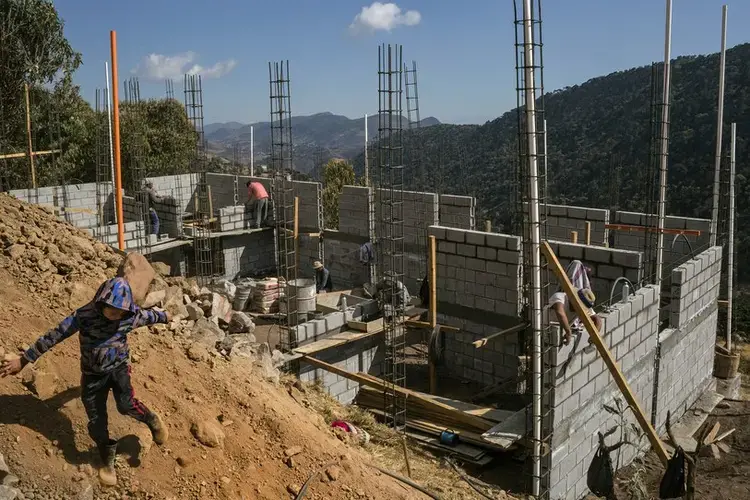
Without this source of support, Velásquez said, levels of violence would be higher, spending would drop, and poverty would be more extreme. In effect, the stability of village economies has become a function of whether a critical mass of its citizens can make it to the U.S. When someone wants or needs something—a house, more land to farm, a car, seed money to open a store—the most common way to get it is to leave. “There is no law that’s going to change how many people come to the U.S.,” Velásquez said. “When there’s this level of poverty and inequality in Guatemala, people will always go. They see the example of their families and their neighbors who have gone, and they see how they’ve been able to advance as a result. An average worker in Guatemala doesn’t earn enough to cover his basic living expenses.”
Each remittance house in the western highlands tells its own story. Some of the houses are occupied by the wives, children, or parents of men working in the U.S. Others are finished but uninhabited, because their owners decided to stay in the U.S. rather than return home as planned; the sunk cost of an unused home in Guatemala—about thirty thousand dollars—is still not worth more than steady wages in the U.S. Even so, not all of the houses showed signs of success. Many of them remain half built, in some stage of halting progress or abandonment. The owner may have been deported before he could finish paying for the construction, or, as one person told me, “Cayó en el vicio”—he succumbed to an addiction, or grew reckless with his money. In a small town on the outskirts of Todos Santos Cuchumatán, in the department of Huehuetenango, several remittance houses had American flags painted onto their outer walls or incorporated in tidy patterns along façades and cornices. I was told the image was both a status symbol and a statement of gratitude to the U.S. as a place of opportunity. But it also seemed to remark on the immediate surroundings, the atmosphere of scarcity that drove people away in the first place.
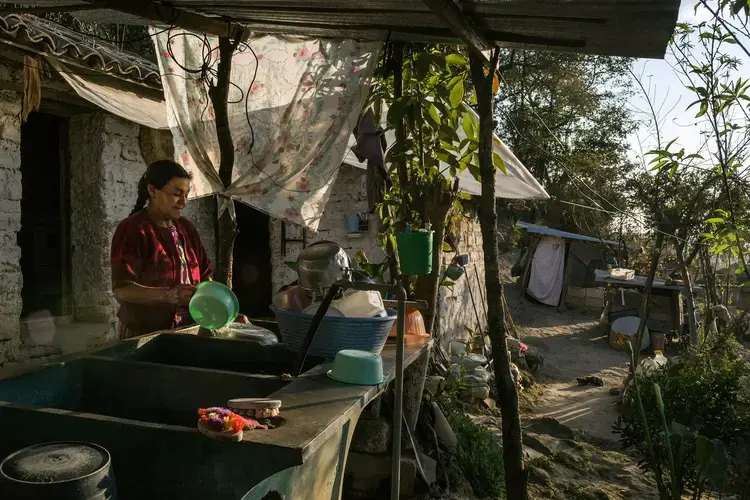
On a Saturday afternoon in February, Israel Vaíl, a forty-eight-year-old father of two, was cleaning up a construction site in his yard, on the outskirts of a town called Cajolá. He is tall and rangy, and wore a blue hard hat. “In the United States, construction workers clean up after they’re finished for the day,” he said. “But here it’s the head of the project who does that.” Vaíl has two sons in the U.S.—a twenty-seven-year-old and a twenty-four-year-old, both in Morristown, New Jersey—and he was overseeing the construction of his younger son’s house. Piles of wood, cinder blocks, and rubble ringed the yard, and chickens wandered around a giant stone oven, where his wife was boiling soup in a small hut covered with a slab of rusted metal.
Three days a week, Vaíl and his son speak by phone to talk about the project. Vaíl sends him photos and status reports on Facebook, and his son makes requests for modifications. “Here, it’s not always what the designer wants but what the builder is capable of doing,” Vaíl said. “The problem here is that most of the builders have left. Those who didn’t already migrate are going north, to Huehuetenango, where there’s even more construction going on.” His son wanted a large living room in the new house, but it was too expensive and complicated to build. He insisted on having a bathroom in the master bedroom, and Vaíl coördinated with a team of five builders to make it happen. “He wanted it in the American style,” Vaíl said.
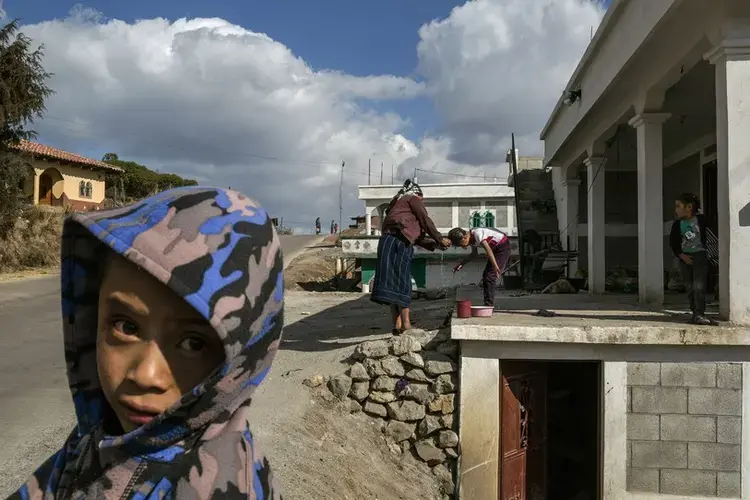
Vaíl also used to live in Morristown, where he worked as a cook for about a decade before returning home, in 2009. “The recession made work too hard to find in the U.S.,” he said. Five years later, his children decided to leave. “There was nothing here, so they had no choice,” he told me. His older son’s house, which is next door to the construction site, is already finished; his wife and five year-old daughter, whom he’s never met, live there, and so do Vaíl, his wife, and Vaíl’s own parents. Vaíl estimated that a quarter of Cajolá’s population had emigrated to the U.S. When I asked him why, he pointed to a hundred-pound bag of maize. “That’s Mexican maize,” he said. Since the mid-nineties, large industrial producers in Mexico and the U.S. have been flooding the Guatemalan market with cheap maize; families like Vaíl’s, who used to sell and eat their own, could not compete. “More people living in the U.S. are now sending their money back for houses because of Trump,” he continued. “They want to protect themselves in case they get deported. They need to have a house to come back to.”
Vaíl has been working on his younger son’s house for the past year, and the construction is a few months from being finished. We walked up a flight of stairs, onto the roof. Wood scaffolding rested on a ledge covered in small stone columns, and cinder-block walls standing about six feet high left the top floor open to the sky. Metal rods marked out where the rooms would eventually be. From this vantage, we had a view of the dirt streets and sloping hills of Cajolá. In every direction, there were clusters of houses being built, in various stages of completion. “All of these houses weren’t here three years ago,” Vaíl said. “Now look at it. There are more houses than people.”
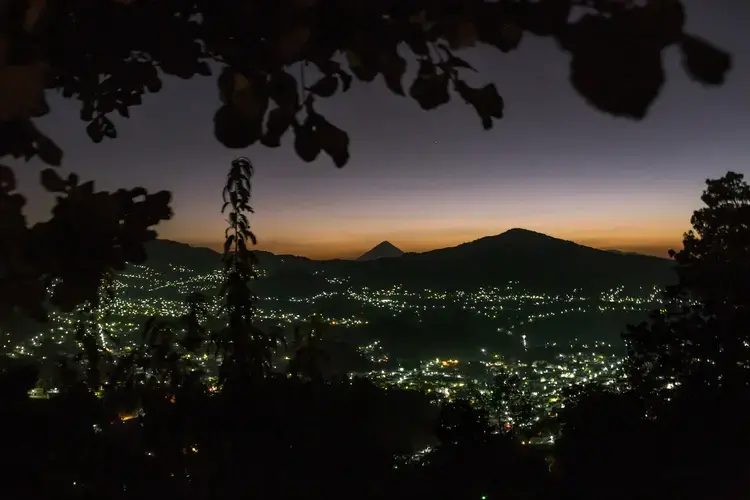

Education Resource
Meet the Journalist: Jonathan Blitzer
What role does climate change play in prompting people to leave their homes in Guatemala and seek...





